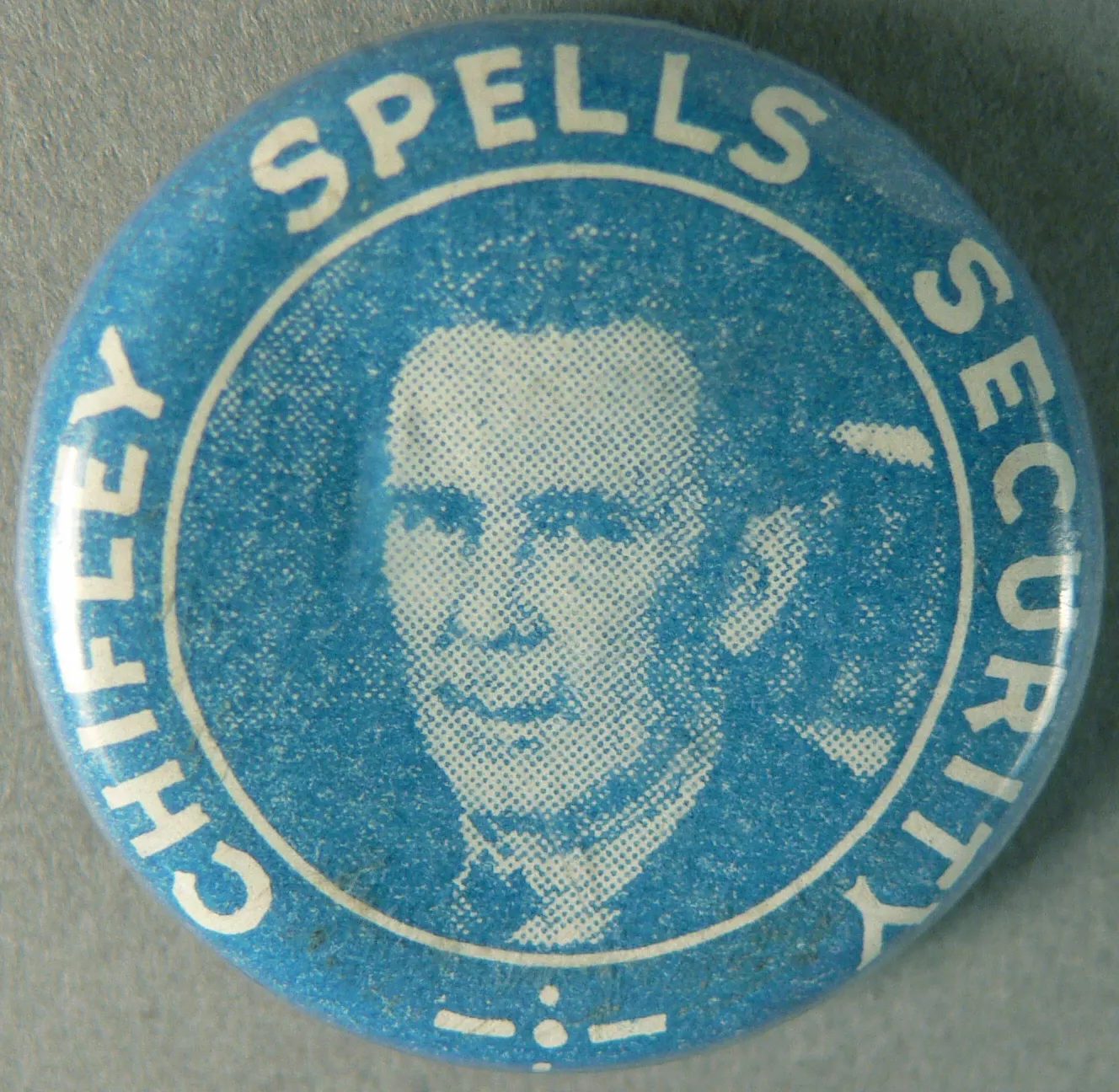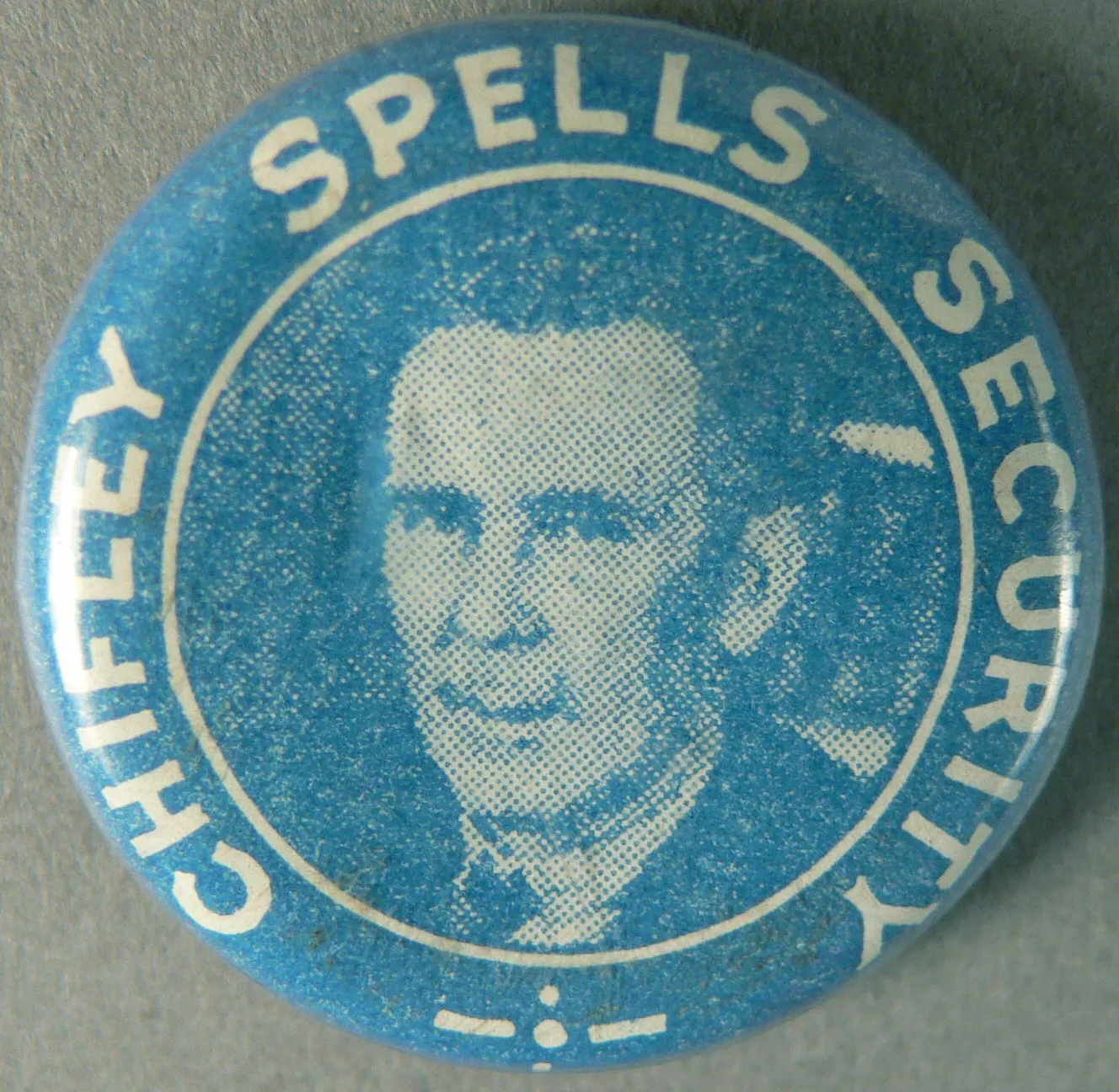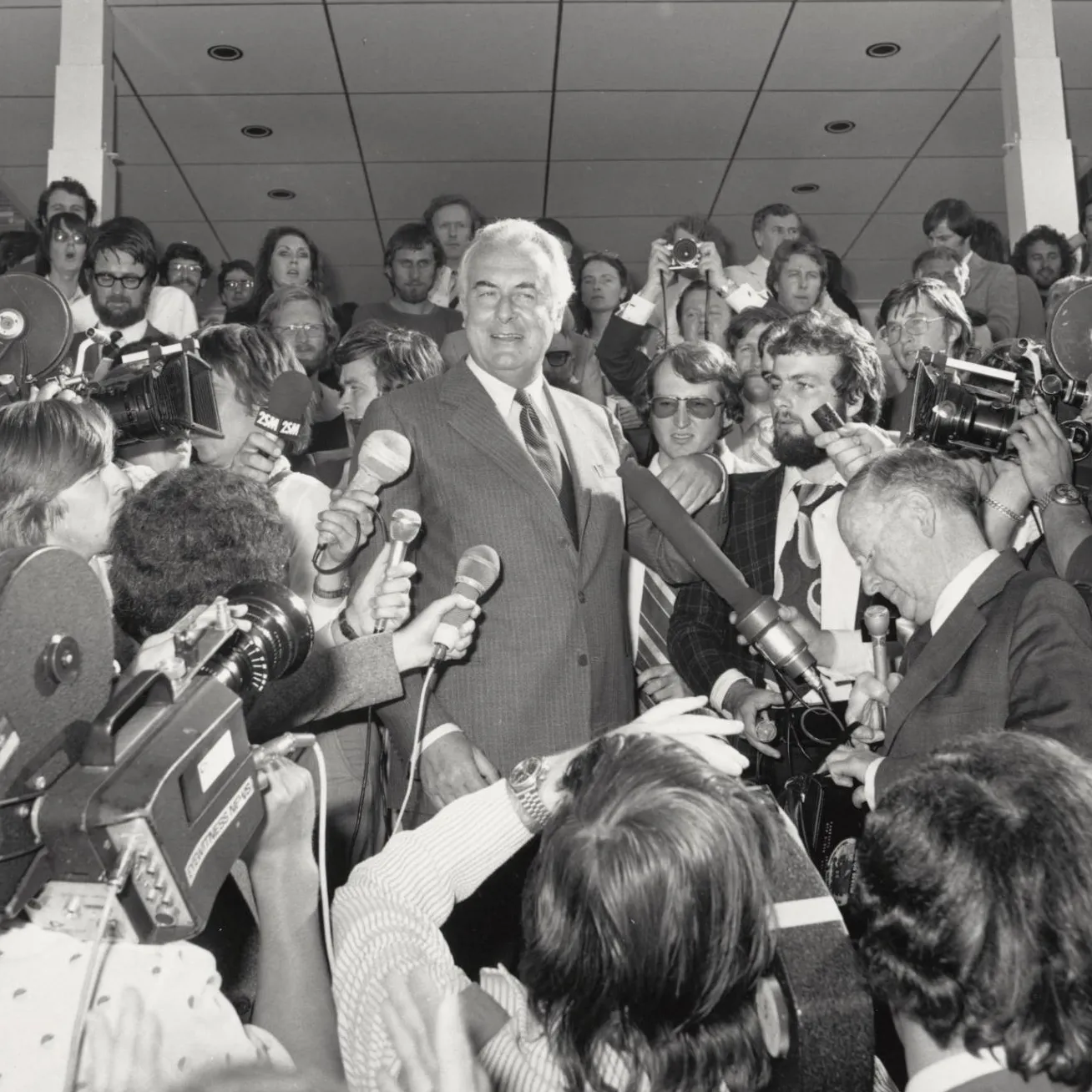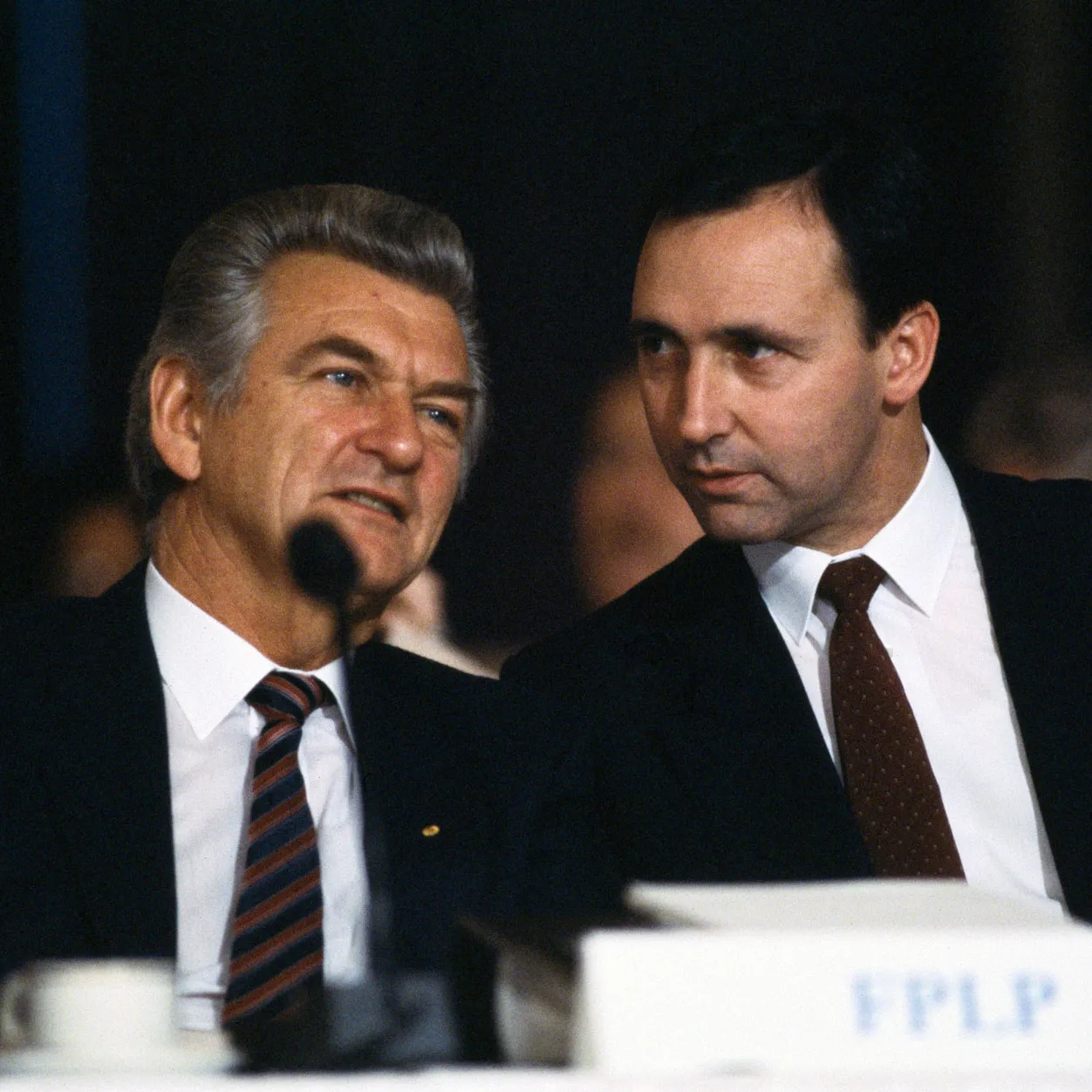1946: Social Services referendum
Taking our medicine.
Date
28 September 1946
Question
Do you approve of the proposed law for the alteration of the Constitution entitled 'Constitution Alteration (Social Services) 1946'?
Result
A majority of Australians in every state voted YES. The Constitution was changed.
NSW
Yes: 897,887 (54%), No: 764,723 (46%)
VIC
Yes: 671,967 (56%), No: 528,452 (44%)
QLD
Yes: 299,205 (51.26%), No: 284,465 (48.74%)
WA
Yes: 164,017 (62.26%), No: 99,412 (37.34%)
SA
Yes: 197,395 (51.73%), No: 184,172 (48.27%)
TAS
Yes: 67,463 (50.58%), No: 65,924 (49.42%)
Total
Yes: 2,297,934 (54.39%), 1,927,148 (45.61%)
In 1946, 54 per cent of Australians agreed that it is, or at least that the government should have the ability to. The 'yes' result in the 1946 referendum saw a new clause inserted in the Constitution giving the government power to make laws about social welfare and medicine. In doing so, it created a new kind of relationship between Australians and their federal government.
In the first half of the 20th century, the question of who was responsible for welfare payments was a bit fuzzy. Although the Constitution didn't specifically give the federal government the power to do so, it introduced a maternity allowance in 1912, and a child endowment payment in 1941. A widow’s pension followed in 1942. In 1946, the Chifley Labor government passed a law to make prescription medicines cheaper. Three doctors challenged the law in the High Court, fearing it was the beginning of nationalised healthcare.
The High Court found in the doctors favour, ruling that the proposed law was unconstitutional. In response, the Chifley government called a referendum. It proposed to add a completely new power to the Constitution, clearly spelling out that the government could make laws not only on medicines but a range of other social services, including medical services and unemployment benefits.
Doctors' groups and some state governments were against the proposal. Leader of the Opposition Robert Menzies, however, saw the value of the change and campaigned for a 'yes' vote. The referendum was held at the same time as the 1946 federal election, and two other questions were part of the same referendum. These questions revolved around employment and trade – neither passed.
But the welfare question did pass. All six states agreed to the change and Australians voted in favour by 54 per cent to 46. The new clause was ultimately a game changer. It led to the development of the Pharmaceutical Benefits Scheme, a whole new range of social security payments and, from 1973, the beginnings of Australia's universal healthcare.

‘Chifley spells security’ badge, c. 1946. Chifley’s down-to-earth appeal helped him successfully pass the social security referendum and saw the Labor party re-elected in 1946.
Museum of Australian Democracy Collection 2011-0096
Extract from the official YES case
'...as time went on, all political parties came to realise that it was the community's duty to provide for the people benefits of a social services character. This was recognised not only by Labor governments but also by their opponents.
The whole purpose of social services is to ensure that people may live out their lives in freedom from fear and from want. The Commonwealth has not had assured constitutional power to make a just and all-embracing law for social security. Part of such a law must be provision for health, because health is the basis of happy living.
We cannot have such a law until you give the Commonwealth your authority for it by voting YES.'
Source: Official YES/NO pamphlet, 1946
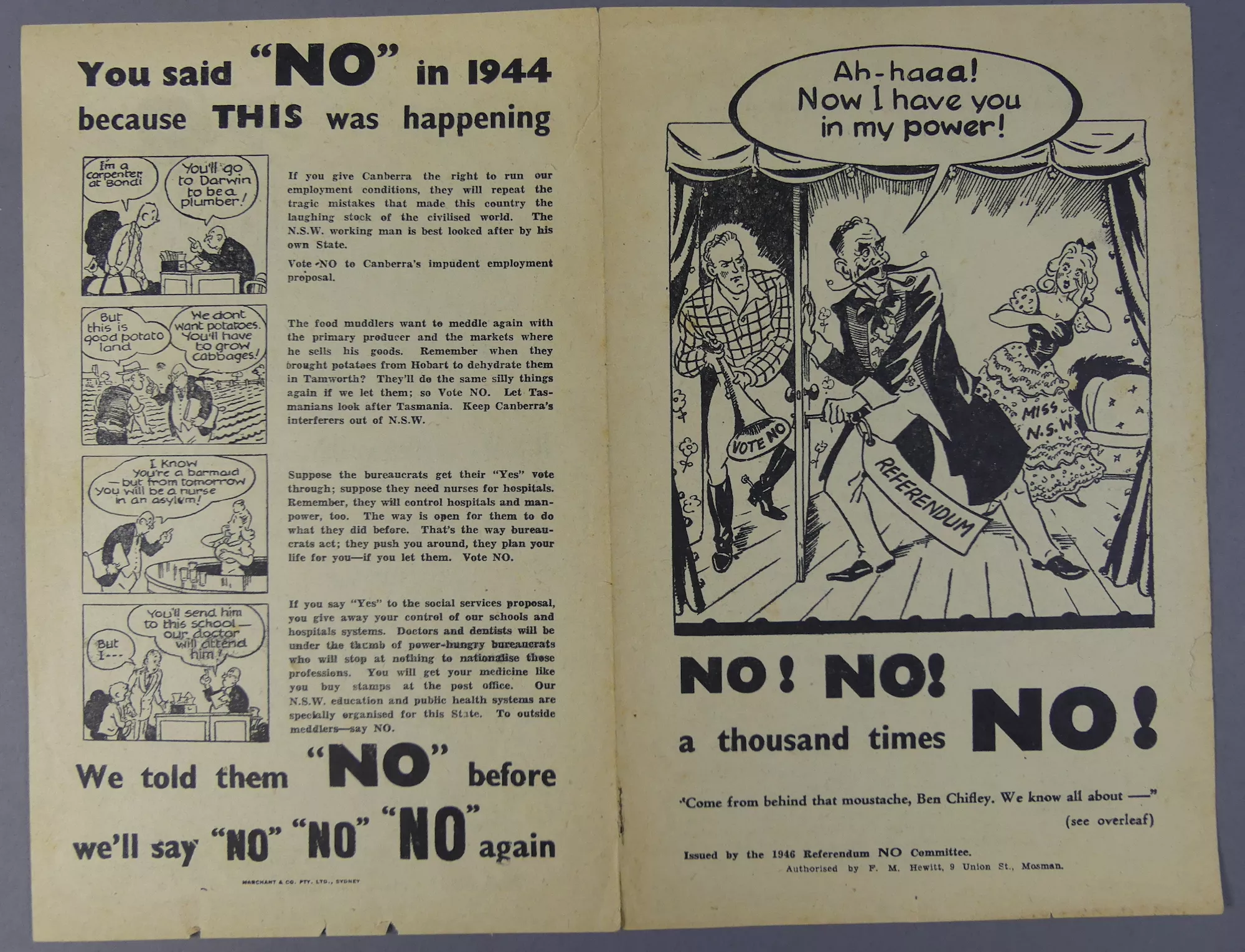

In the 1946 ‘no’ campaign pamphlet, which focused heavily on the rights of the states, Chifley was portrayed as a power-hungry villain and a spider.
Museum of Australian Democracy collection 2017-1285
Extract from the official NO case
'The pharmaceutical benefits case, with which the Commonwealth is trying to panic the electors into granting further powers, did not decide that benevolent social services were beyond the present Commonwealth powers, but decided that the Commonwealth cannot use its present powers over social services for exercising bureaucratic controls over the people. The High Court declared the act invalid because it sought not just to distribute moneys for the people's benefit but to exercise unwarranted control over them.
And remember...if these enormous powers are granted, they are granted forever to every Commonwealth Parliament which may henceforth wish to use them for any conceivable purpose, ulterior or otherwise, whether that Parliament be Labor, Liberal, Socialist, Conservative, Communist or Fascist.'
Source: Official YES/NO pamphlet, 1946
Did you know?
Some argued the original proposed change could have authorised the government to institute civil conscription, by legislating to make doctors and nurses employees of the Commonwealth. The specific exemption in the final bill that forbade civil conscription was proposed by Robert Menzies as a compromise.

